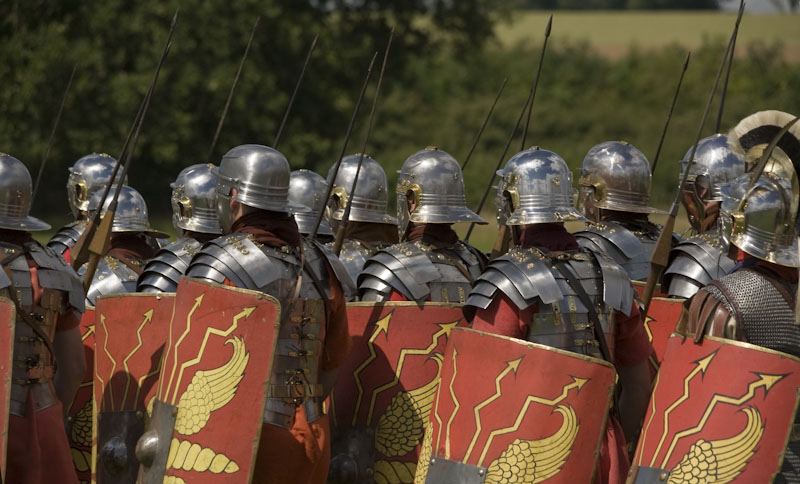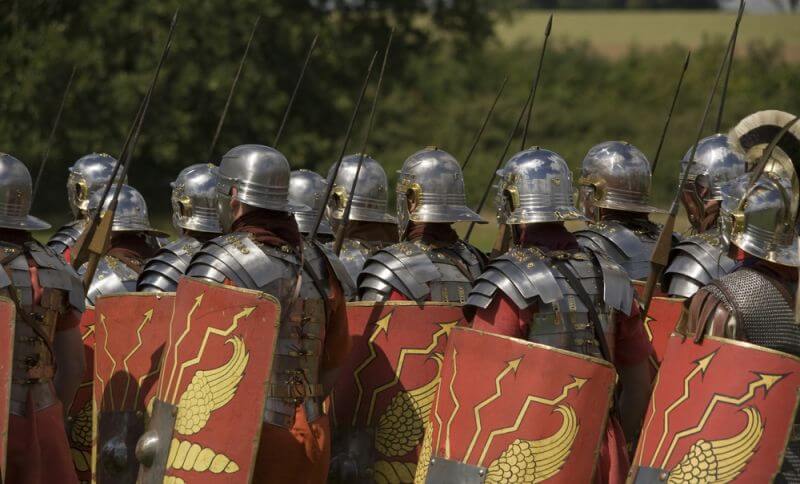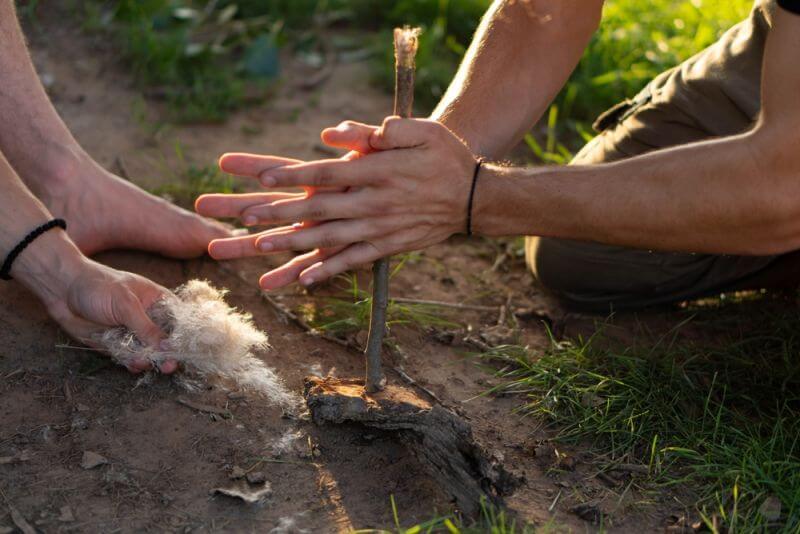Pretty much any part of history can provide us with lessons for survival. After all, the history of mankind is a history of survival. Only the survivors got to write the history. Or, to put it another way, only the survivors were written about. The most that is said about those who didn’t survive is that they didn’t, often with an added comment to the effect of “We don’t know what happened to them.”
Looking at the lives of these people, what they did and how they did it, can provide us with invaluable lessons for our own lives. That’s largely what historians do; seek out those lessons. It’s not their fault that society at large ignored the valuable lessons they dig up. But then, too many people today think in terms that we are too advanced, as a society, for anything serious to happen to us. After all, if we are faced with a disaster, FEMA will be there to rescue us.
Yeah, right.
I’ve always enjoyed studying history. Not the history in the textbooks, which is all about names and dates and places; but the part of history I’m interested in, is how people lived their lives and did things. The ways people did things in the past is fascinating to me, as well as holding a slew of survival lessons that we can use. After all, a lot of preppers say that if an EMP or CME were to happen, we’d be back in the 1800s. Therefore, it only makes sense to learn how they did things back then… or even earlier.
Even earlier can cover a lot of ground. Each and every culture that came before us has its own lessons to teach us. We can even go so far as to say that each part of those cultures has something to teach us. With that being the case, it would follow to reason that more successful cultures would have more lessons what we need to learn. It’s just a matter of taking close enough a look at those sub-cultures to capture the lessons.
The Roman Empire was the longest lasting empire in the world’s history. That alone, even without looking at the great engineering feats and monuments they left behind is enough to make it one of the greatest cultures in history; one which should be able to teach us a lot. The Roman Legions, which consisted of almost a half million men at its peak, covered the known world at that time, conquering, keeping peace, building forts and bridges and maintaining the roads. They were much more than we think of, based on what the movies show us.
The Roman Legionnaire
Roman Legionnaires, as their soldiers are called today, were tremendous all-around athletes, able to perform outstanding feats of strength and endurance as part of their daily life. It wasn’t that they exercised to keep in shape, but rather that the life they lived and the work they did built them up and gave them great endurance. It was not uncommon for a Legionnaire to expend 5000 calories in their daily toil and 6000 a day in combat.
To do this, the Legionnaire relied on a combination of food provided by the quartermaster’s corps of the Legion and his own industry, gleaning grain and other crops from the lands they conquered. A sickle was a standard part of his kit, with which he could harvest grains that he would thresh by hand, then cook as part of his diet. Legionnaires were very self-sufficient, in that each man was responsible to feed himself. There was no common mess hall they went to, once the day’s work was done, they would prepare their own meals, sometimes sharing this task with a buddy.
Each Legionnaire carried a pot to cook in and a bowl to eat from. They also carried salt, which they received as part of their salary (the root word by which we derive the name salt). The knife they used to cook with, could be the very same one they carried for war. Keeping that knife sharp, along with his other weapons, was just part of the evening’s chores, undertaken with a honing stone he carried in his kit.
There’s something to be learned here, from our viewpoint, as preppers. Even while traveling, those soldiers were taking out time to gather food from the land they passed through. They carried a sickle to harvest game with and at least some of their weapons would be easily adapted for hunting. Putting that into terms of bugging out, they ate a combination of what they carried in their bug out bag and what they could glean along the way.
More Than Soldiers
It may be hard to see Roman soldiers as more than cruel oppressors, who took joy in the game of whipping and tormenting those held for various crimes; but in reality, they were very industrious. When not fighting, the Legions undertook infrastructure projects, which started as soon as they conquered new lands. Many of the bridges, roadways, aqueducts and fortifications which still stand today were built by Legionnaires, not “professional” construction workers. Quite literally, the very same armies that conquered new lands, turned to bringing Roman style civilization to those people, the very next day.
As part of his kit, the Legionnaire carried both a pick-axe and a mattock, along with a turf-cutter, all necessary tools for digging defensive trenches around their positions, as well as working on those civic projects. Besides being useful in completing that part of their work, the physical work they undertook also served to keep the Legionnaire in shape, alongside his constant, ongoing training.
Hence the Legionnaire was expected to learn more than just how to fight. While he was not expected to be a bridge and roadway engineer, stone cutting, a necessity for both building bridges and building stone-paved roads required both skill and patience. The blacksmiths of the Legion were probably kept busy sharpening the chisels used in stone cutting every night, so that the Legionnaires could use them for the next day’s road, bridge and aqueduct construction.
There are two interesting parts to this, for us as preppers. First, the Roman Legions were trained to think beyond the battle, to the work of assimilation beyond, through bringing the advantages of Roman technology and infrastructure to the newly conquered lands. But the second part is even more important to us; that is, they were trained to think in terms of more than the current struggle; thinking of what they would do to truly make their new conquest part of the Roman Empire.
As Soldiers
We cannot overlook the fact that the Roman Legionnaires were the most highly trained and best equipped soldiers of their time. Coupled with the tactics that they were trained in, and which their officers knew how to employ, they were a formidable fighting force. Based upon their conquests, we can easily say they were the most formidable fighting force of their day.
Looking back at the history of Roman conquest, it is clear that the Roman Legions were the most effective fighting force of their day; gaining victory after victory, wherever they went. A large part of this can be attributed to the training of the Legionnaires. By comparison, their opponents were largely untrained peasants, who used whatever they had at hand as a weapon. Most weapons in Medieval times were actually tools, which the owners grabbed before going off to fight. The good thing about that was they were intimately familiar with those tools. But the bad was that they were not built for fighting with, but rather for working with.
These untrained fighters faced Roman formations, which maximized the Legionnaire’s individual fighting ability, while providing them with a considerable amount of protection against attack. Roman troops, attacking in formation, were largely protected by a wall of shields, while their opponents might not have shields at all, giving the Legionnaires a distinct advantage.
While their equipment and tactics gave them distinct advantages, they only worked because of the training of the individual soldier. While we cannot and probably should not try to recreate the Roman Army’s version of boot camp, we should adopt the idea of becoming the best of the best. In whatever needs to be done, in a post-disaster world, whether building or fighting, we must be the best.
Legionnaires in the Aftermath of a Disaster
We can look at the aftermath of a disaster much like the aftermath of war. Just as the Roman Legionnaires turned from battle to building, we too must realize our own necessity to turn to building as well. In the aftermath of any TEOTWAWKI event, there is likely to be a leadership vacuum. The government will have largely collapsed and what government still exists will be fighting for their own survival. Someone will need to take over and unless we step up to fill the breach, that someone will end up being warlords (a fancy name for criminal gangs).
I cannot see a warlord standing up to even one Roman Legionnaire, let alone a Roman Century. The government would not fall that easily. Such people would be dealt with as criminals, maintaining peace in the realm, regardless of what else was happening. There is an important place for this, in any time of crisis; and if we are not prepared to take that stand, hiding off by ourselves, I wonder what it will end up costing us.









